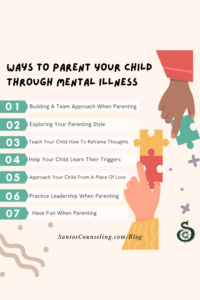How To Blend A Family Successfully
1. Who is the easy target?
Blended families often share that they struggle with discipline when it comes from the stepparent to the stepchild. This is often due to internal feelings that both parties may have. As a stepparent, you may feel that you are overstepping a boundary. Your child may feel that you are not their “mom” or “dad,” and because of that, you are not able to. The words “I will tell my mom or dad” are used as a tactic that tends to cause the stepparent to reduce disciplinary actions.
This is a difficult area to address simply because of the dynamics in blended families. There are multiple parents, different households, custody, and varying parenting styles.
Please do not lose hope.
One of the best places to start with is your spouse. Sit down and talk as a couple explore the area of discipline in your relationship. Consider the following questions together:
- What would it feel like for you to see me discipline your biological child?
- How do you think your biological child would react to my discipline?
- How can we remain united with discipline?
- What challenges do you foresee with discipline?
- What are the expectations that you hold for me as a parent?
 2. Have a schedule that supports healthy attention
2. Have a schedule that supports healthy attention
One of the common concerns that parents share in blended families is attention and time. A parent once shared with me that prior to blending the family, he was able to spend just about every second outside of work with his daughter. He shared that he is happy with his blended family yet notices that his daughter displays tantrums when he is not able to spend time with her.
It’s common for kids to want attention. For your child to want to spend time with you. This is especially common during your child’s early versus later years of life. Kids typically display behaviors when they are experiencing emotional challenges. For the parent that I was working with, his daughter would isolate herself or engage in the silent treatment. A supportive read on helping your child with mental health can be found by clicking here.
As you blend your family, try to find a schedule that includes all the parties of the family. The schedule can be created with your spouse so that you are united in the approach. The goal is to consider how you and your partner can allocate healthy time with all the members of the family as a whole and individually.
I completely understand how this may be a challenge. Often parents share that prior to blending their family, they had more time. After blending the family, they feel that they have less time and more members in the family.
My encouragement to you is to connect with your partner and start slow. Try having individual 1-hour events with the kids. Ask your child what they would like to do during their 1-hour time.
Are you ready to explore family counseling with our office? Click here to get started.
3. Practice empathy and compassion
Often the children involved in blended families engage in living in multiple households. This is seen with a child spending time during the week in one home and then going to the other parents’ home.
As a counselor, I like to encourage blended families to consider what life is like for the kids. What it’s like to travel from one home to another.
When blending your family, explore how the transition impacts your child as they move from one home to the other.
Key items to explore with your family system include:
- How does your child feel when transitioning from one home to the other?
- What process can you add to your blended family to support your child with the transition?
- Does your child feel welcome in the home?
4. Sibling rivalry in blended families
In some ways, it is natural for siblings to have rivalries. Sibling rivalry can take place in nuclear families as well as in blended families. You can witness on the sports field when watching one sibling go against the other in a game of friendly basketball. Each is pushing the other to find out who can jump higher or run faster?
In blended families, kids may display behaviors that highlight what is seen as sibling rivalry due to ample reasons. One common reason is seen when kids fight for the attention of the other parent. Such as the biological child fighting with their stepsibling due to not liking that their biological parent is spending more time with the stepsibling.
Blended families can address sibling rivalry by communicating together first. Remember, as the parents. You are the leaders in the family system. It is vital to come together and create a game plan prior to carrying out decisions. At times skipping this step can create a negative shift in the family. One parent may feel left out, and the kids can interpret the act as a divided versus united family.
As you come together to discuss sibling rivalry, consider focusing on reward and consequences. It is very common for one family to have a different set of rewards and consequences compared to the other. Now that you are a blended family trying to unite. Explore rewards and consequences that you and your spouse agree on. For more on step-sibling rivalry click here.
 5. Provide your child with love and support.
5. Provide your child with love and support.
Entering a blended family can have its positives and challenges for your child. A common challenge is that your child may feel that they have to show up in a certain way. For instance, your child may feel and even see that you are ready and very eager to create a blended family. This visual and internal feeling may push your child to experience the pressure that they have to be excited and appreciative of the process that is taking place.
Years back, I worked with a child that shared with me the very pressure they felt. The child shared that they could see how happy his father was about the relationship and having everyone live together. He shared with me that he felt he had to be happy and appreciative because that is what he felt his father wanted from him. We worked together o on building skills to support expressing thoughts and feelings and processing emotions.
As a counselor that works with blended families, I notice that at times there will be the excitement of the process.
To support your child with processing the joining of two families, you can try to slow down the process. This can be done by exploring questions with your child during the process.
Questions to explore with your child include:
- How do you feel about our two families joining?
- What are you most excited about with our families joining?
- Are there any boundaries that you want me to know about as we join our families?
- Do you feel that you have to show up in a certain way as our families join?
6. Explore your role as a parent.
Have you sat down with the kids to talk about your role as a parent, or have you left it up to individual interruption?
At times, parents may blend their families and not entirely focus on discussing the roles in the family. Such as taking time to sit down with your child to talk about who you are in their life. This conversation is extremely vital when blending families.
Imagine two families joining. As they create a blended family, the parents take on the role of parents two their parent’s children. This is known as becoming a stepparent. During this process, it is vital for parents to connect with their children emotionally. To use this space to talk about their role.
One parent can spend time with their stepchild to express their role as the parent. A healthy statement includes, “I want you to know that I love you with all of my heart. I am here that I am not your biological father. For me, that doesn’t mean that I will treat you any differently. I promise to show up for you as a father. I also want you to know that my love for you is not to replace that of your biological fathers.”
The statement above is an example. My encouragement is to read the statement and see which parts of it relate to you.
As you focus on your role as a parent in your blended family, consider the conversations that you can have with your children. The conversations can provide space to engage in deep emotional connections.
7. Create realistic expectations
Couples often blend their families with a focus on love and connection. This is, of course, wonderful and part of the foundation to a healthy and successful family system.
Successful blended families take time to evaluate realistic expectations when joining families. They explore areas such as finances, navigating the relationships that the kids will have with their stepparent and stepsiblings, and preparing for interactions with ex-spouses.
One tip that you can explore is that of finances. Before the families join, it’s more than likely you and your child. You have a clear idea of your expenses and how much you need to earn to cover them. You also have an understanding of your goals and ambitions. Such as knowing that you should save for the upcoming summer trip to Disney World.
You and your partner decide to join your families. To build a strong and beautiful blended family. The topic of vacation comes up, and now your finances are not adding up. Before, it was two of you going to Disney World. With the addition of the new members of the family, it is seven. This type of change can cause stress and lead to challenges when blending the family.
To address it, consider facing it head-on. Take time to connect with your partner on the topic of finances with an open mindset and compassion. Discuss financial goals, vacations, expenses, and other areas connected to finances.
The goal is to create realistic expectations.




